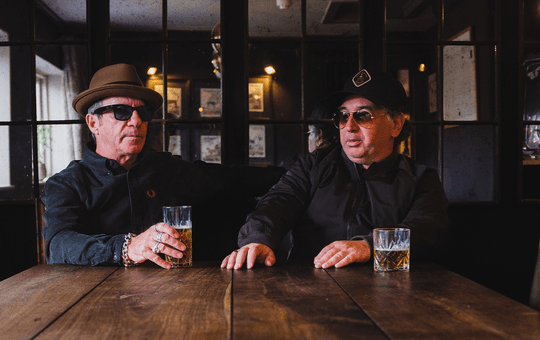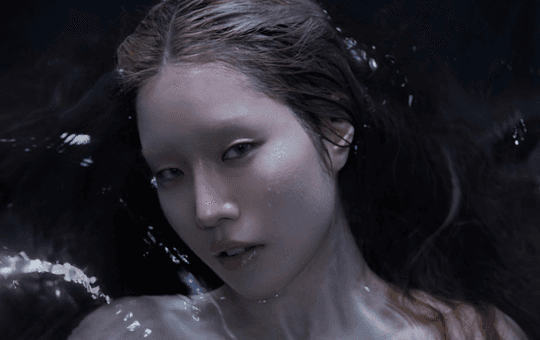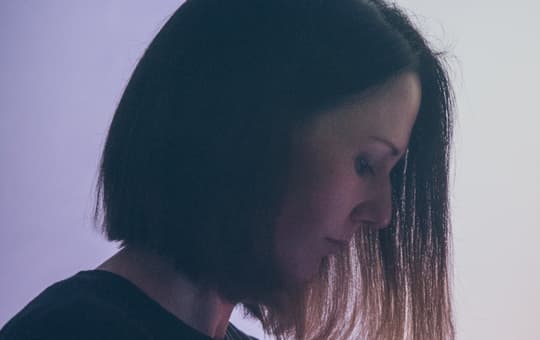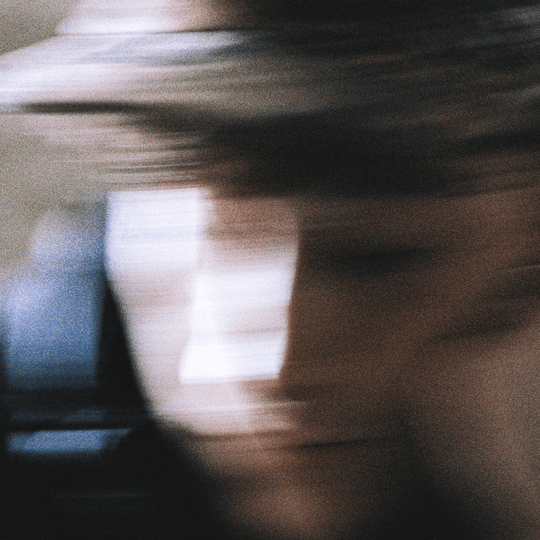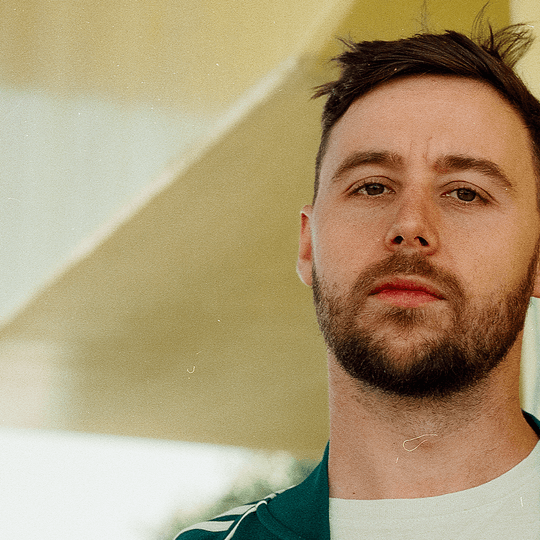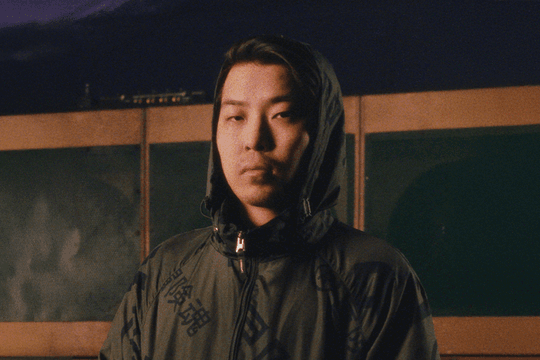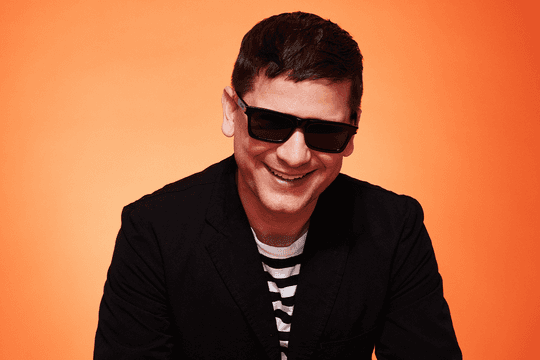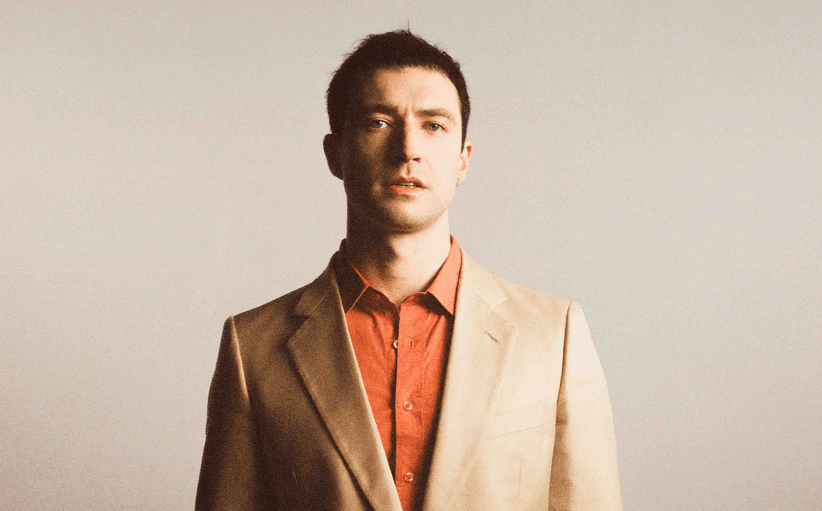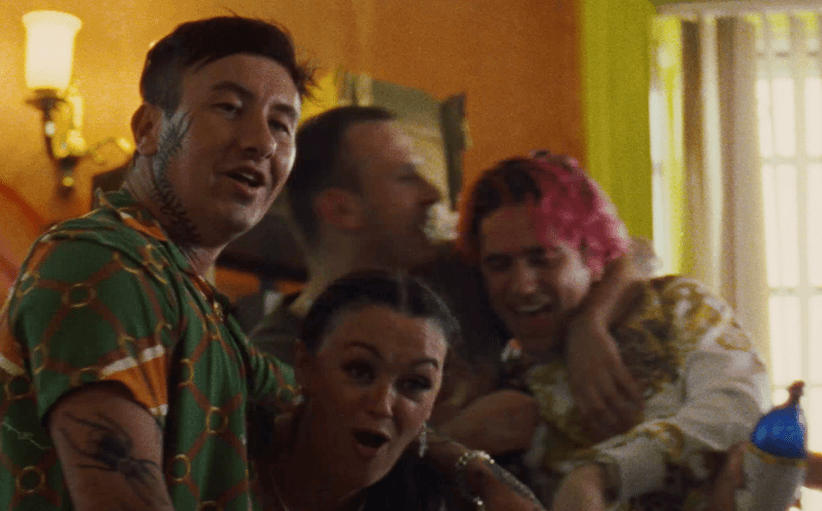Blondes interview: "Dancing is physical meditation."
I’m sitting in a ramen place on 56th Street in New York with Sam Haar and Zach Steinman of the electronic duo Blondes. The noodles are good and the space is warm. Winter in New York has been schizophrenic – unseasonably warm one day, freezing the next – and comfort food is helping. The restaurant was chosen for its proximity to the Museum of Modern Art, where the two are setting up for a live performance and an accompanying sound installation (see photos from the event), but the reason we’re here is to talk about their bewitching self-titled debut album. It follows two years of gradually building hype about their heady, largely improvised music. First there was the ‘Touched’ EP on Merok in 2010, and then last year a rapturously received vinyl series on New York label RVNG Intl. kicked off by the Meredith Monk sampling Lover. (Read an interview with the three from last year.)
Vinyl was – and is – a wonderful medium for Blondes: their tracks are so dense that it feels natural to watch them travel across a looping, physical groove. But, conceptually speaking, records are still for collectors. So with their debut album being released on CD and digitally, collecting together those six previously vinyl-only tracks with the addition of two new tracks and a second disc of remixes, it now all feels realer than ever. “[Vinyl and Youtube videos] were the only ways you could hear us,” says Steinman. “It’s kind of funny that that is what’s different now – the digital thing is the actual thing.”

Blondes at MoMA. Photo: Stephanie Kimberly
At the risk of pitting the idea of “digital” against that of intuitive rawness – dance music itself has proven this isn’t true – the music of Blondes, so simultaneously poignant and ecstatic, sounds far-removed from the computerized, overly-perfected layers of what is typically understood as trance. “We always wanted to make music that’s human and tactile,” says Haar. It is a testament to their need for others to hear the music being shaped that they record their tracks live with little editing. “Every time we’ve tried to make something that’s digital, it just hasn’t worked,” continues Steinman. “It’s not that we’re not digital, but live electronics are…” “A little bit of our passion in electronic music,” finishes Haar. Like the almost-sensuous fluidity of each track and the changing headspace they create upon every listen, Blondes’ live sets are always different and depend on the audience. They work instinctively in call-and-response with the crowd; they just couldn’t function within the pre-set confines of something digital. “It’s interactive,” says Haar. “When we’re playing live, the way the audience reacts – we feel that and that changes how we react. Everyone’s involved in it, in a way.”
These ideas – interaction with the audience, and intuition guiding the process through which the music is made – easily fit into the schema of another fabled abstraction: the image of the artist, or two working together, crafting wordlessly, everything flowing instinctually, even its presentation to the world. Steinman, a visual artist, and Haar, who also works in sound installation and has mixing credits on records for Balam Acab amongst others, are keenly aware of their aesthetic as a group. When I ask how their other work factors into Blondes – besides the obvious MoMa example – Haar replies, “I think it maybe has in the way that we both consider it an art project. It’s kind of specific. We both make things that aren’t in line of the specific philosophy of the band, but the band is its own project, its own sort of concept.” Steinman adds: “It’s true that it’s kind of like an art project in the way that we approach it. The way we make things has to be within our conception of what we like to do. My influence as a visual artist has probably affected us gesturally, within how we make music, how we present ourselves as a band, our aesthetic. And Sam’s influence has probably been how well-recorded our music is. Each of our strengths have played into working together.”
“We always wanted to make music that’s human and tactile.” Sam Haar, Blondes
This was true from the beginning, even on the aforementioned ‘Touched’. The textures and layers of that effort are as lush and complex as ‘Blondes’, but things have certainly changed. “[We] didn’t have the same club exposure,” explains Steinman. “We hadn’t played in front of the number of people we play in front of now. It was bedroom music.” “More headphoney,” adds Haar. “It’s definitely becoming more clubby music. It also all depends on how or where you vision our music being played. I don’t think we envisioned it being played, necessarily, at…”
“At Club Space?” I guess, in reference to their 2011 performance at the infamous Ibiza venue.
“No, never imagined that!” he says. “That was mind-blowing.”
Their career has followed a very distinct pattern of growth – from headphones to Ibiza – but it feels organic. “It’s kind of interesting that our intentions for the music have basically evolved at the same time that the music’s evolved,” says Steinman. “I think we initially wanted to make more headphone music when we were doing that, and now we’re just feeling out its own path.” Haar laughs: “It’s kind of created its own path and we’re just kind of following it. The music is directing us!”
So it makes sense that the music directed them here: to the MoMa, to Club Space, to the sets of vinyl releases titled after juxtaposed themes that eventually became their album. Yet even in the midst of their growth, there’s that natural, human essence in everything they produce. “[The new album] is a bit faster, with more emphasis on…resonant bass frequencies,” says Haar. “But,” chimes in Steinman, “it’s still very hypnotic in the same way the last record was. It’s not very straight. There’s still a lot of us playing. It’s very live.” Regarding their approach to editing on the album, Haar says, “There’s a little more editing, for sure, on some of the tracks. [But] on some of them, there’s none at all.” Creating in that dreamy, wholly connected way they do, then – in both live performance and in the studio – might never change, no matter where they go. “Dancing is physical meditation,” explains Haar. “Getting out of your head and entering your body is a very important experience.” Even the album’s closer, Amber, which might be the least conducive to dancing, sounds like a liquid space trip; it is fair to call it beautiful. When asked if their intention is to make music this meditative, for listeners to lose themselves in, Steinman agrees, for the most part. “I guess the goal is to make music that we experience in the same way the audience does. It’s not premeditated, but I guess you could say you’re probably listening to the same experience that we’re having.” Haar picks up the thread: “It’s a little more selfish, in a way. We trip out on making it.”
“The goal is to make music that we experience in the same way the audience does.” Zach Steinman, Blondes
With the music quite literally guiding them, one wonders where Blondes will go next. “We have a few industrial design projects, an appropriation of our branding,” reveals Steinman. “We’re both very excited to see how our process evolves,” says Haar. “We’re going to make more music [but] we’re not that interested in just being a band. It’s very much a creative outlet and a collaboration. We’re interested in sort of expanding that – what one can do with media.” Steinman feels the same, adding: “We have a few projects in mind that we’re going to explore. There’s so much more possibility than just the course of music.” Sounds like Blondes are just warming up.
RVNG Intl. release Blondes’ debut album ‘Blondes’ on February 7th 2012. Catch them live at the Shacklewell Arms on Thursday 16th February (details)
